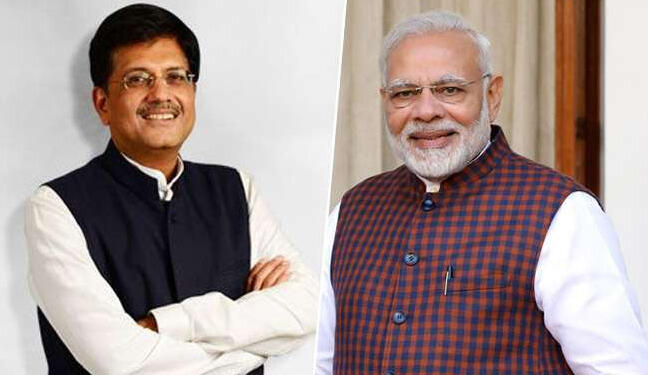There is a striking and vast difference between the pre-2014-era India, and the India of today. This difference cuts across almost all fields. With the Modi government at the helm of affairs, a lot has changed for the better, and the results are beginning to show. Today, India is considered a business-friendly destination, while domestically, innovation is at an all-time high. The Modi government’s support for start-ups and the massive digitisation push has made life much easier for all stakeholders concerned. Due to the cutting of absolutely unnecessary bureaucratic red tape, the number of patents granted since Prime Minister Narendra Modi took over in 2014 has seen a whopping 572 per cent increase!
Last week, Commerce and Industry Minister Piyush Goyal said that 28,391 patents were granted in 2020-21 as compared to 4,227 grants during 2013-14. Speaking at an award function on August 17, Goyal informed that 14.2 lakh trademark registrations were done in 4 years, from 2016 to 2020, in comparison to 11 lakhs during 75 years stretching from 1940 to 2015. The stupendous rise in the number of patents granted in the last seven years has also begun reflecting in the strengthened Global Innovation Index of India.
In the Global Innovation Index of 2020, India has jumped by 33 ranks from 81, up to the 48th position. This is the first time that India has made it to the list of top 50 countries with the highest Global Innovation Indices. Piyush Goyal, while appreciating this performance, also called on all stakeholders to do more. He said, “We must all work in a mission mode to achieve the ambitious target of being in the top 25 nations of Global Innovation Index”.
There have been several reforms that have brought India into the list of top 50 countries in terms of global innovation. For example, the pendency in the intellectual property rights department has drastically come down from 72 months to 12-24 months now. Piyush Goyal is now pushing for such pendency to be reduced from months to days. Additionally, the fees required for filing by startups, women entrepreneurs and MSMEs have been brought down by as much as 80 per cent.
Every application is now digitally processed from the beginning to the end. Even hearings are conducted via a phone call, and there is no real need to travel to patent offices any longer to get the work done. It has also brought down corruption and weeded out lethargy from the system. As a result of the same, E-filings have risen from 30 per cent to 95 per cent.
In the past seven years of the Modi government, there have been close to 3 lakh more patents granted than 75 years preceding this government, which is an unprecedented feat. It shows that businesses are feeling much more emboldened and confident under this government, and are not shying away from developing exclusive products and services which they want to be patented. The rising number of patents is directly linked to the enhanced innovation that is taking place in India. Products of this innovation are then getting patented at a pace never known in India before.
This surge in innovation will boost job creation, quality, competitiveness and manufacturing. The innovation surge will have a variety of positive effects for India in several fields and sectors. Complemented with a business-friendly environment, the Great Indian Story is just getting started. Much of India’s success in this direction can be attributed to the dynamic leadership of Prime Minister Narendra Modi, and his trusted colleague Piyush Goyal – who is overhauling the business environment of India, from one where it was hassling to have even one job done, to now, where everything is done seamlessly.





























